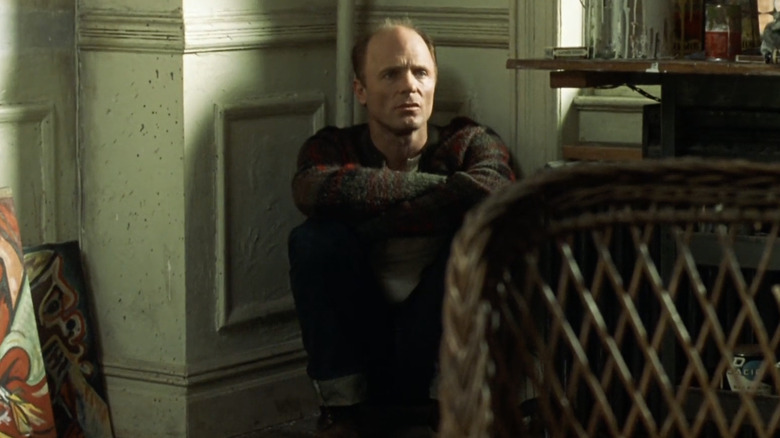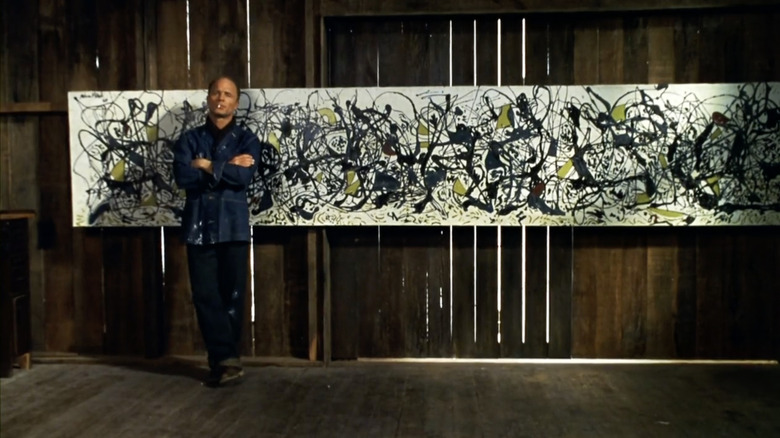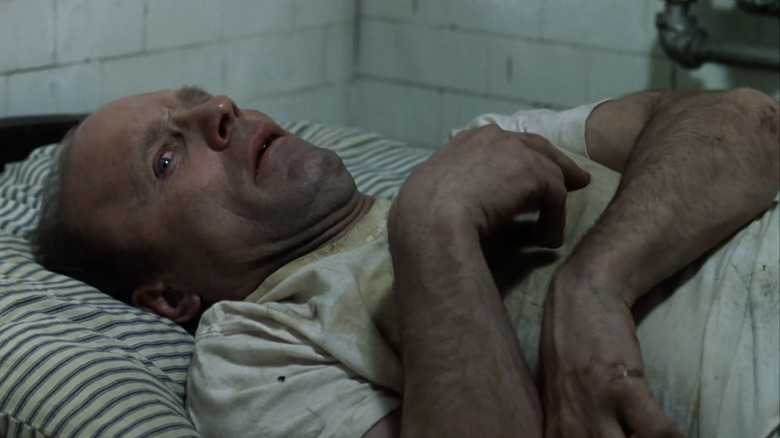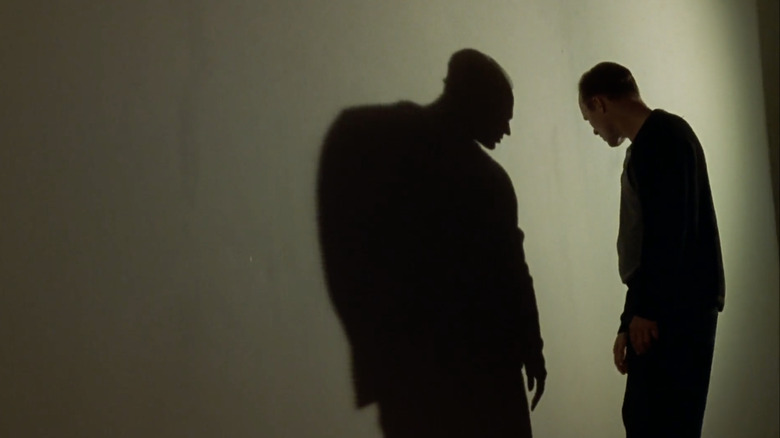Pollock Was A Decade-Long 'Obsession' For Actor-Director Ed Harris
Today, many consider Jackson Pollock to be one of the greatest painters to have ever lived. His famous drip technique is recognized as a revolutionary turning point in abstract art, and his paintings sell for many millions of dollars, but the artist never experienced that kind of financial success during his lifetime. In spite of the larger-than-life genius label the painter comes with now, Pollock spent most of his life struggling with poverty, manic depression, and alcoholism, and it was only through painting that Pollock was able to battle his demons.
Back in the late '80s, after receiving a book on Pollock from his father, Academy Award nominee Ed Harris became fascinated by the life and work of the late artist. After reading several biographies and studying the work of Pollock, Harris was interested in portraying the artist in a movie, but over the next decade, Harris' interest in the late painter's life intensified.
After a decade of research, Harris' interest in Pollock's life and work became an obsession that led to his starring role and directorial debut in "Pollock."
Rebel with a paintbrush
Before delving into Harris' film, it's important to understand why Pollock is such an interesting subject for it. Even today, while art collectors are forking over loads of cash for Pollock pieces, many don't understand the artistic appeal of his work. Abstract art, especially the dripped, swirling lines of a Pollock is sometimes dismissed as nonsensical or unrefined by critics, but that is exactly what made the American painter different.
Instead of using recognizable imagery or classical techniques, Pollock danced around the canvas, filling every inch of it with energy, and authentic, personal expression directly from his subconscious. In an interview with The Getty Conservation Institute, art historian and Pollock expert, Pepe Karmel, explained that Pollock redefined the public's image of an artist:
"He's rebel without a cause, he's the guy in the denim jacket, snarling at the camera [...] That was really different. Until Pollock, painters were guys who wore tweeds and corduroys, and would go into the studio with a smock or with a three piece suit and dab at the canvas with your brush. Suddenly, it was this crazy, dynamic, athletic performance, and everyone went, 'Wow! That is a completely different way of being an artist.'"
Of course, the painting world will always revere classical painters in fancy coats with dabbing strokes, the same way film buffs appreciate Classic Hollywood actors, but there should also be room for a James Dean, Marlon Brando, and Jackson Pollock.
Harris' Complete Pollock
After years of reading biographies, speaking with art experts, and examining paintings, Harris' passion for portraying Pollock deepened, and he started painting in order to understand Pollock's techniques and accurately portray the painter in the movie. Eventually, it snowballed into a full-on "obsession," as he described in an interview on TODAY. "I literally spent almost a decade building up to work, to shooting that, you know?" Harris said. Harris even ended up spending his own money to get the film made.
As he explained to The Getty Conservation Institute, after a decade of research and obsession, Harris realized he wanted more control over the Pollock project:
"I had no intention of directing it until about a year before we began filming. I just wanted to play Pollock. I'd never directed a film before, but I realized [...] I didn't want to hand it over to anybody. I'll direct it myself."
With Harris' obvious reverence for the genius painter Pollock, it would have been easy to create a mythical tale that focused on his talent and revolutionary contributions to the world of painting, but Harris didn't take the easy way out. Refusing to shy away from the darkness of Pollock, and his life-long struggles with low self-esteem, alcoholism and depression, Harris' film is a full and complete portrait of the man behind the genius.
The pop culture myth of Jackson Pollock is that of a rebellious man who took the art world by storm with his fresh techniques and rejection of classical forms, and there is some truth to that, but the heartbreaking reason Pollock painted is often overlooked.
Peace in the chaos
The painter's genius is debatable, but the all-consuming darkness that resided in him is not. Harris' film opens with a drunken Pollock, over the shoulder of his brother, yelling, "F*** Picasso" in the stairwell of a rundown apartment building. From the first image in the movie, Harris shows a man who not only struggles with addiction, and anger, but a crushing inferiority complex.
Throughout his life, even after he receives attention and admiration for his art, Pollock's mental and emotional state only gets worse. He flips tables, throws things, verbally abuses his devoted wife and fellow artist, Lee Krasner (Marcia Gay Harden), and drowns himself in alcohol that eventually leads to his death. In the majority of the movie, Pollock is portrayed as a villainous figure, except for the scenes where he paints.
When armed with a paintbrush, blank canvas, and paint, Pollock bounces around the canvas like a trained athlete, making sweeping strokes with supreme confidence he could never muster in his day to day life. His mind is focused, alert, no longer plagued by all the intrusive thoughts of inferiority or failure. These sequences are the only moments in the film where Pollock is content, satisfied, or happy. It seems the same was true in real life.
After a decade's long obsession with Pollock, Harris could have created a picture-perfect portrait of the artist, but he chose to imitate one of Pollock's paintings on film. Similar to his work, Pollack was a tangled web of pain and energy, which occasionally produced beauty, just like Harris' film.



